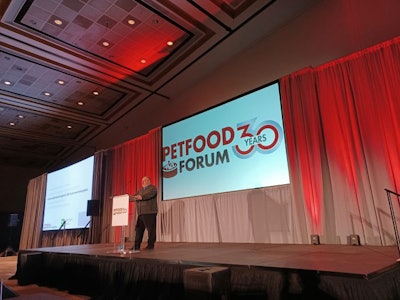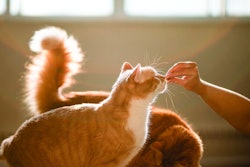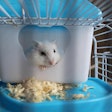
While the COVID-19 pandemic has not sparked new trends in pet ownership and product purchases, it accelerated trends that were already in place, according to David Sprinkle, research director at Packaged Facts.
Sprinkle spoke May 3 during Petfood Forum in Kansas City, Missouri, USA.
One of those trends, he said, is that pet owners are spending more on pet health and wellness, as they have focused more on their own health and wellness during the pandemic.
Millennials and adult Gen Z pet owners “certainly intensify the trends that have been driving the pet industry for over a decade. And so, this is more health and wellness concerns about their pets, and sharper health and wellness concerns about their pets,” Sprinkle said.
And, it’s the more affluent pet owners who are spending more on their pets, he said. Almost 40% of pet owners with a household income of more than US$350,000 spent more than US$500 on their pets per year. That percentage shrinks as the household income goes down; only 19.8% of households with an income of less than US$30,000 spent as much on their pets.
“This ties into what has been a historic pattern whereby pet owners overall tend to be slightly more prosperous than households overall. It is a discretionary expense, if you will, but cat owners historically have been somewhat less prosperous than dog owners,” Sprinkle said.
Average dog food sales per dog in 2021 was US$320, compared with US$239 in 2019. For cats, average food sales per cat was US$217 in 2021, compared with US$169 in 2019.
Millennials and adult members of Generation Z are, by far, the generational cohort that owns the most cats and dogs, and those numbers have risen in the past year while ownership in other generational cohorts has fallen or remained flat.
In fall 2021, 45.8% or millennials/adult Gen Z owned a dog, compared with 27.2% of baby boomers, 21.5% of Generation X and 5.5% of older seniors. Cat ownership in fall 2021 was slightly less for most cohorts, at 43.6% for millennials/adult Gen Z, 29.2% for baby boomers, 21.3% for Gen X and 5.9% for older seniors.
Millennials and Gen X cat and dog owners buy more super premium food for their pets than other generational cohorts, Sprinkle said. When asked whether they were paying more attention to their pet’s health and wellness because of COVID-19, 45% of millennial and Gen Z respondents agreed, while 40% of Gen X and 35% of boomers agreed.
“As we see this play out across dog owners and cat owners, we do see this pattern,” Sprinkle said. “And that translates very directly into the types of pet food formulations that you choose.”
More Gen X and millennial/Gen Z dog and cat owners than boomers indicated that their pet has one or more specific health or wellness issue or need, such as allergies, overweight or anxiety/stress.
The percentage of pet owners that have a dog or cat age 7 or older is much higher than those that have young dogs or cats 1 year of age or younger.
“That is attributed to better veterinary care, to better pet food, and to more spending on pet health and wellness,” Sprinkle said.
















